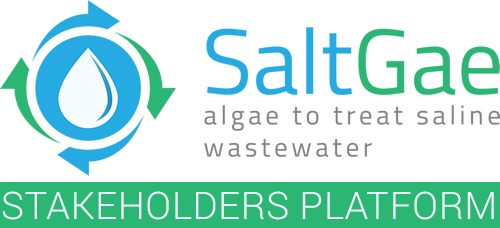Public Documents Archive
Download and view our public documents and promotional materials. To view them, you may need a PDF reader such as Adobe Acrobat installed on your Mac or PC.
Disclaimer: The content of the public documents reflect only the author and project partners’ view and the EASME and EC are not responsible for any use that may be made of the information contained herein.
A novel energy recovery device/RO test rig targeted to treat & recoup low industrial wastewater flows
Cairns, Mícheál and Fitzsimons, Lorna and Delauré, Yan (2017)
In: 11th Membranes in Drinking and Industrial Water Production (MDIW) conference, 5- 8 Feb 2017, Leeuwarden, The Netherlands.
D7.1 System settings and model
The aim of task 7.1 is to develop a system model that includes the necessary data and information required to implement tasks 7.2 Techno-Economic evaluation (viability study), 7.3 Environmental assessment and 7.4 Social assessment (Figure 1). The life cycle inputs and outputs as well as components of the treatment systems will be modelled and clear system boundaries and scenarios to be evaluated will be defined. Interactions and exchanges with external systems such as nature, energy systems and society will be included in the model. Benchmark systems will also be defined, which will serve as a reference to which the SALTGAE technology will be compared to in terms of performance.
D8.1 Technology Innovation System Analysis
The aim of the study is to identify main barriers and obstacles for the introduction on the market of SaltGae technologies, in particular the application of algae for wastewater treatment for F&B industries. The purpose is focused on main research question: What are the main barriers and challenges for the implementation of innovative wastewater treatment using algae into market? In this report, a Technological Innovation System (TIS) analysis is presented for the treatment of wastewater through the cultivation of algae for biomass valorisation by using High Rate Algal Ponds (HRAP) technologies and by recycling saline nutrient-rich wastewaters from F&B industry. The study is organised as follow: the introduction of the SaltGae project, and motivation behind it. A second chapter follows explaining the TIS method which will be applied in order to analyse the status of the wastewater technologies. The third section offers a description of the TIS components in term of environment, technology, actors, networks and institutions, followed by a section on the functional patterns of the TIS. The fourth section is dedicated the functional analysis and the fifth to identifying barriers. In the final chapter, the results will be discussed.
D8.2 Technology innovation system strategy and roadmap
This report consists in a study to identify the market strategy for the SALTGAE technology, which is based on the cultivation of algae for biomass valorization by using High Rate Algal Ponds (HRAP) technologies and by recycling saline nutrient-rich wastewaters from Food and Beverages industry. The objective of this report is to assess the present technical and market framework in relation to the proposed technology, with the aim to facilitate the innovation and take-off of this new solution in wastewater treatment sector.
D1.1 Growth protocol of algae strain in saline wastewater
The first task of WP1 (Halotolerant Cultures), led by FPTP, was to set-up lab-scale microalgae/bacteria systems in different saline wastewaters. Three saline wastewaters were chosen in the project framework: tannery, fishpond and cheese whey/dairy wastewaters, since the final goal of the project is to respond to the request of a wide range of industrial sectors, such as leather, food processing and land-based aquaculture.
The aim of D7.2 is to examine the environmental and economic performance of the installed demonstration sites, as well as selected algae valorization routes. The study should provide information for technology developers on the implications of design choices. A screening Life Cycle Assessment (LCA) and a Life Cycle Cost Analysis (LCCA) have been carried out to study the environmental impacts and cost incurred in the life cycle of two demonstration sites, namely KOTO in Slovenia and Archimede in Italy. Furthermore, only some valorization routes have been examined, namely composites and animal feed. A screening LCA and LCCA means that the study includes a combination of site-specific data, generic data from literature and databases, and some rough assumptions. Therefore, this deliverable is an interim report and the results presented need to be interpreted carefully. The estimated values and assumptions will be refined when further operational data from the consortium becomes available, and final conclusions will be reported in deliverable D7.3.
This report presents the sustainability assessment for the SaltGae project. Three demonstration sites where installed in Slovenia, Italy and Israel. The cost and environmental impact of these systems were evaluated with a life cycle assessment (LCA) and a life cycle costing assessment (LCCA). A social life cycle assessment (S-LCA) was also performed for the Italian and Israeli sites. Further, the consortium carried out a set of lab-scale experiments to valorise algae into different products, including animal feed, platform chemicals for adhesives and coatings, composites and ceramic pastes. Some of these routes were also evaluated using life cycle-based methodologies. Results and conclusions of these analyses are presented in section 4. This report also presents the business feasibility assessment of the SaltGae systems. This assessment evaluates the potential for the technology to be commercialized. First, the technology readiness level (TRL) of the system components was assessed based on performance, integration level and user satisfaction. Then the market readiness of the technology was evaluated by dividing the project into four routes: basic system functionality, valorization of solids and sludge, valorization of effluent and valorization of biomass. To estimate market readiness, issues and solutions were evaluated. Results and conclusions of these analyses are presented in section 5.
 Slideshare
Slideshare
